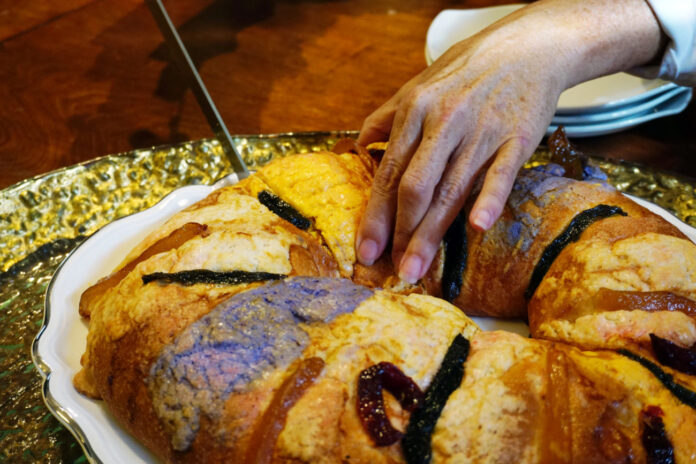For more than 300 years, little children in countries all over the world such as Italy, Spain, Mexico and some parts of the United States, would go to sleep on Jan. 5, knowing that the next day when they woke up presents from the Three Reyes Magos would be waiting for them along with the Rosca de Reyes to celebrate Día de los Reyes Magos.
“What I love about the rosca de reyes is the meaning,” Chef Celia Galindo said. “It is round for the crown, but it also means the love that God has for everyone. The corona also represents all the countries, worldwide, whether you’re a Christian or not. He loves everyone and what I love is the saying that comes with it: The rosca de reyes can help the believers remember God because God can turn darkness and bitterness into light and sweetness and that’s the whole meaning of the rosca.”
El Día de los Reyes Magos is celebrated on Jan. 6 in several countries around the world. The three reyes magos, Melchor, Gaspar and Baltazar travel throughout the world and bring gifts to children. According to the tradition, there were many reyes magos and they were visionaries, Galindo said.
“The rosca is a corona, so when you see a rosca de reyes you are seeing a corona of the three reyes magos,” she said.
“There wasn’t only three, everybody believes it was only three but there were many. What it was is that they were very rich men and they were considered wise men because they studied the stars and their whole purpose was to find out what’s going to happen; they were visionaries.”

The Rosca de Reyes started in Italy and traveled to France, which was known for being the king of bread, after there, it went to different countries, including Spain, and eventually made it to Mexico where it evolved from having habas inside to a baby Jesus.
“It came to be a baby when it got to Mexico,” she said.
“They did the representation of the baby. Now, they put a lot of them, but when I was small it had to be one and only one. It’s really funny because I read this and there’s people that love to get the monito and there’s people that hate it. They make it disappear or keep it in their mouth. I had a tía that got it twice and twice she swallowed it. They do not want to make the tamales, that’s the whole thing. It is really funny.”
At first, those who celebrated would break the bread of the rosca and share it. Eventually, it evolved to using a knife, which also has a special meaning.
“The knife is Herodes and supposedly he is coming to get baby Jesus and is cutting in trying to find that baby,” she said. “That’s why the knife is so important now, but before it was the breaking of the bread. It is very interesting.”
With different parts of the rosca having several textures and flavors, all of them have a special meaning. The candy represents the jewelry, the lines are all the countries they traveled to find baby Jesus and the baby inside represents baby Jesus hidden along with Maria.
“Like every tradition, it comes from generations and this one has so much history that when you bring it to the table you can talk about it,” she said. “That’s how we grow, that’s how we keep learning about ourselves and our history.”




